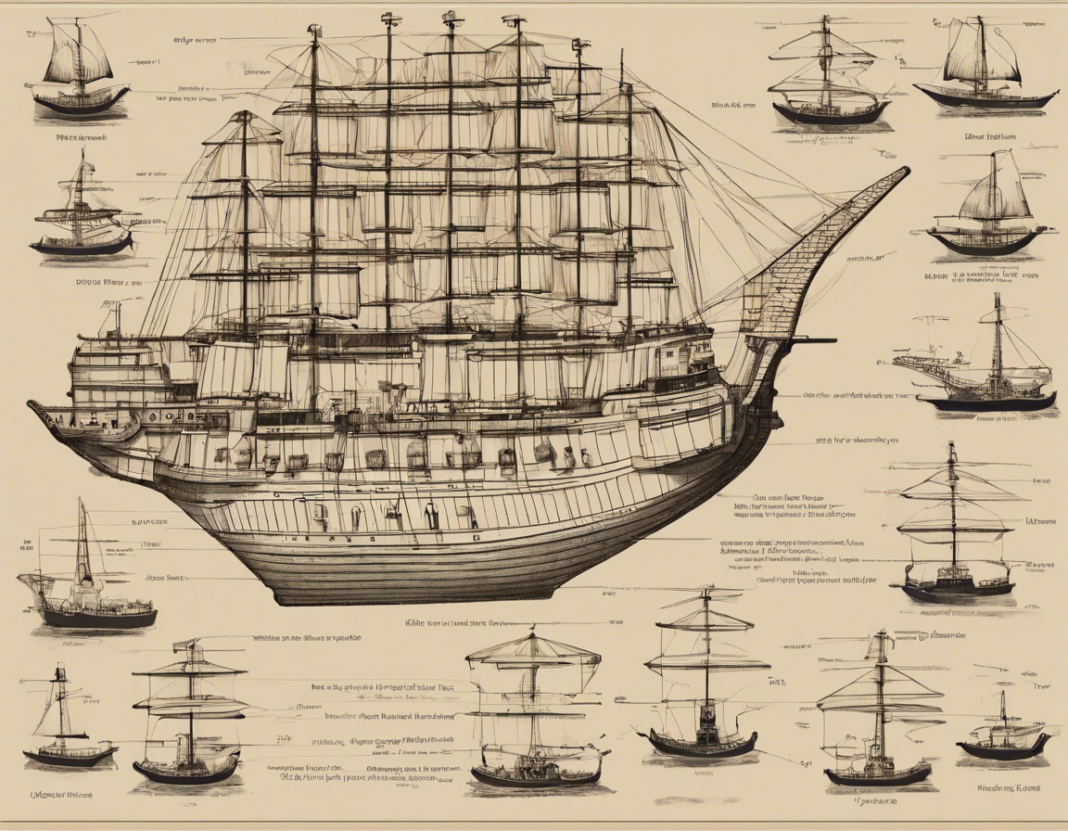When it comes to ships, whether massive cargo vessels or sleek yachts, there are numerous essential parts that work together to ensure the vessel can sail efficiently and safely. Understanding these key components is crucial for anyone interested in maritime engineering, ship design, or just with a general fascination for ships. In this article, we will delve into the essential parts of a ship, breaking down their functions, importance, and how they contribute to the overall operation of the vessel.
Hull
The hull is the main body of the ship, serving as its outer shell. It is typically made of steel or aluminum and is designed to be watertight and strong enough to withstand the forces of the sea. The hull provides buoyancy to keep the ship afloat and supports the superstructure and other components. It also helps reduce drag, allowing the ship to move more efficiently through the water.
Bow and Stern
The bow is the front of the ship, while the stern is the rear. The shape of the bow helps determine how the ship interacts with the water, impacting its speed, stability, and maneuverability. The stern often houses the ship’s propulsion systems, such as propellers or thrusters, which are essential for moving the vessel through the water.
Superstructure
The superstructure is the above-deck structure of the ship that houses the bridge, accommodation areas, and other functional spaces. It provides shelter for the crew and passengers, as well as space for navigation equipment, communication systems, and other essential components. The superstructure also plays a role in stabilizing the ship and protecting it from the elements.
Propulsion Systems
Propulsion systems are responsible for moving the ship through the water. Propellers, thrusters, and engines are common components of a ship’s propulsion system. Propellers are typically located at the stern and work by pushing water away from the ship to generate forward motion. Thrusters, on the other hand, provide lateral movement, while engines power the entire system.
Steering Systems
Steering systems, such as rudders and steering gears, are critical for controlling the direction of the ship. The rudder is typically located at the stern and is connected to the steering gear, which allows the crew to turn the ship by angling the rudder. Modern ships may also use advanced systems like azimuth thrusters for enhanced maneuverability.
Navigation and Communication Equipment
Navigation and communication equipment, including GPS systems, radars, and radio communication devices, are essential for safely navigating the seas and staying in touch with other vessels and shore-based facilities. These systems help the crew determine their position, avoid obstacles, and communicate any emergencies or changes in course.
Cargo Handling Systems
For cargo vessels, efficient cargo handling systems are essential for loading, unloading, and transporting goods. This may include cranes, conveyor belts, and storage areas designed to accommodate different types of cargo. Proper cargo handling systems are crucial for maximizing efficiency and ensuring the safety of the crew and the cargo.
Ballast Systems
Ballast systems help stabilize the ship by controlling its weight distribution. By taking on or releasing water into ballast tanks, the ship can adjust its draft and stability, especially when loading and unloading cargo or encountering rough seas. Proper ballast systems are crucial for maintaining the ship’s seaworthiness and maneuverability.
Safety Equipment
Safety equipment, such as lifeboats, life rafts, fire suppression systems, and emergency alarms, are essential for ensuring the well-being of the crew and passengers in case of emergencies. These systems are designed to meet strict regulations and are regularly inspected to ensure they are in proper working condition.
HVAC Systems
Heating, ventilation, and air conditioning (HVAC) systems are crucial for maintaining a comfortable and healthy environment on board the ship. These systems help regulate the temperature, humidity, and air quality in the accommodation and working areas, ensuring the well-being and productivity of the crew during long voyages.
Frequently Asked Questions (FAQs)
-
What is the keel of a ship, and why is it important?
The keel is the backbone of the ship, running along the bottom of the hull from bow to stern. It provides structural support and helps the ship maintain stability and prevent rolling. The keel also houses the ballast tanks that help control the ship’s weight distribution. -
How do ships stay afloat in the water?
Ships stay afloat due to the principle of buoyancy, which is the upward force exerted by water that opposes the weight of the ship. The shape and displacement of the hull, along with the buoyant force, keep the ship floating on the water’s surface. -
What is the significance of the draft of a ship?
The draft of a ship refers to how much of the ship is submerged in the water. It is essential for determining the vessel’s maneuverability, stability, and ability to navigate in different water depths. The draft may change depending on the ship’s cargo and ballast. -
How do ships generate power for onboard systems?
Ships typically generate power using generators powered by diesel engines or other fuel sources. The electricity produced is used to power propulsion systems, HVAC systems, lighting, navigation equipment, and other onboard systems. -
What are the different types of ship propulsion systems?
Ship propulsion systems can include diesel engines, gas turbines, electric motors, and sails. Each type of propulsion system has its advantages and is suited for different types of vessels depending on factors like speed, efficiency, and environmental impact.
In conclusion, ships are complex vessels with a multitude of essential parts that work together to ensure their safe and efficient operation. From the hull and propulsion systems to navigation equipment and safety systems, each component plays a critical role in the overall functioning of the ship. Understanding these key parts is crucial for anyone interested in the maritime industry or simply curious about the fascinating world of ships and seafaring.

